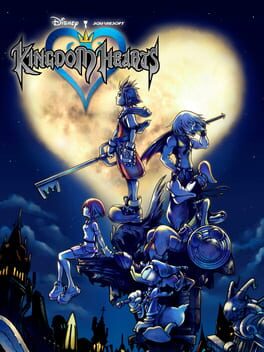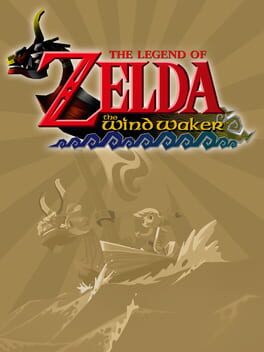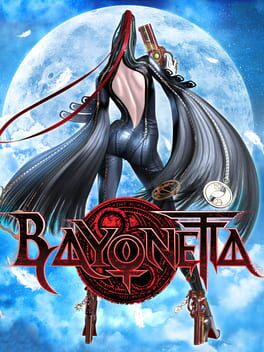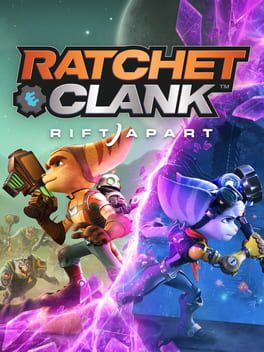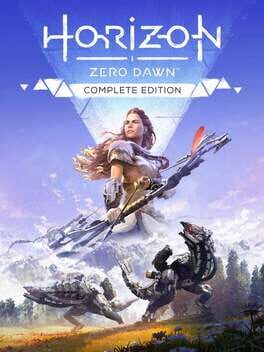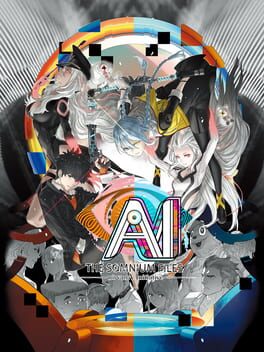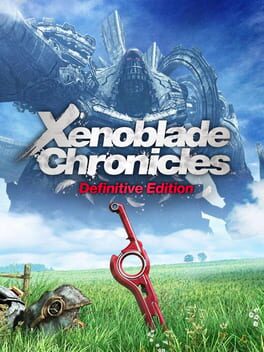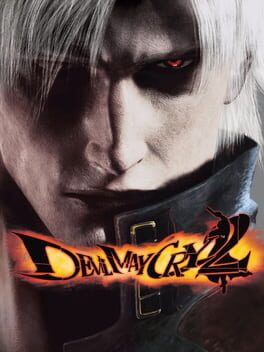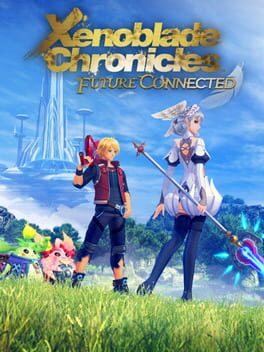Renne
Bio
24 year old with a geography degree, a little bit too much free time, and way too many games in the backlog. I make it a point to not star my reviews nowadays, since they’re more conversation pieces than objective declarations of a game’s quality or worth. PFP courtesy of Twitter and Discord user @HiddenSoundTest.(He/they)
24 year old with a geography degree, a little bit too much free time, and way too many games in the backlog. I make it a point to not star my reviews nowadays, since they’re more conversation pieces than objective declarations of a game’s quality or worth. PFP courtesy of Twitter and Discord user @HiddenSoundTest.(He/they)
Badges

Liked
Gained 10+ total review likes

N00b
Played 100+ games

3 Years of Service
Being part of the Backloggd community for 3 years
Favorite Games
106
Total Games Played
000
Played in 2024
009
Games Backloggd
Recently Played See More
Recently Reviewed See More
This review contains spoilers
[this review will contain spoilers, at least in broad strokes, for Xenoblade Chronicles 2.]
Where do I begin with this one, really?
Well, certainly not at the actual beginning. After all, I came into this series smack in the middle. And now, I'd like to talk at least a little bit about how starting with 2 colors my perception of this first entry—or at least, its gussied-up Switch version.
Structurally, Xenoblade Chronicles feels almost like a funhouse mirror version of its younger sibling. Both generally follow a similar broad outline, with the steadily-expanding party trekking through wide-open plains, beautiful swamps, and frozen wastes before climbing a tower of steel. But where 2 plays this broad premise roughly to the hilt... the original game keeps going. While I'm going to be talking about some later-game stuff here, I'm not gonna go too into the specifics; just know that a good friend's description of the game as a long string of climaxes is pretty on the mark, and it's interesting how the team precognitively subverted the plot of the seven-years-later sequel... while also setting up further twists and conventions that game would subvert in turn, especially around the legendary Monado.
At least to my knowledge, Shulk is one of the better-liked role-playing game heroes of recent memory, and that's interesting. Far from strictly an everyman, he's an accomplished tinker who furnishes weapons for his friends and has serious trouble being forthright about his worries. When he comes into possession of the all-powerful Monado, which lets him see the future, he sets off not on any grand quest to save the world... but simply to get revenge for the sacking of his home and the murder of his best friend. Where Xenoblade 2's Rex is a more innocent, altruistic soul, Shulk starts off motivated by pure rage; it takes seeing some rather shocking truths to jolt him off course and redirect his unyielding will towards a burning desire to connect, and truly save the world. It's a very well-realized arc, watching his reasons for fighting change so completely even though the underlying flame burns as hot as it ever has.
For the most part, the other half dozen members of the party are also deeply interesting characters to learn about and see interact and fight. We have Reyn and Riki, the comic-relief tanks who both possess incredible emotional intelligence; Melia, the crown princess who struggles under the tremendous weight of her station and relies on the others (particularly Shulk) for support in her own quest for vengeance; Dunban, the Monado's previous wielder and Shulk's idol who bears the burden of his loss with an uncanny stoicism; and Fiora, the aforementioned best friend who fights with shocking ferocity yet only wants to make sure Shulk is happy. Sharla, then, is probably the weakest link, with her central plotline also being about revenge for a lost loved one... which takes up almost her entire major script, the rest either being stereotypical "girl-talk" or the writers moving to pair her up with Reyn. Say what you will about the character designs in Xenoblade Chronicles 2, but I think the writers did a much better job of making all the main female characters in that story have at least one major character trait that wasn't about their femininity or romance. I don't even think it's a contest.
An aspect where both games are closer in quality is, as Monolith Soft have led me to expect by this point, the worldbuilding. Owing to the hardware of the original Wii, the twin worlds of the Bionis and Mechonis are altogether a good bit smaller than the world of Alrest. However, this world is not only more interconnected, but I think better-utilized, with very few areas that feel underexplored on the critical path or in sidequests. With a couple glaring exceptions, nearly every area in the game connects in such a way that you can travel between them by foot, which overall gives the Bionis and Mechonis a real sense of unified place. And while the bigger towns of this world are few and far between, many of their people are named, with explicitly-spelled-out relationships to one another and their own little daily schedules in the vein of Shenmue. Side quests outside of the glut of generically-named "get this thing, fight these monsters, kill this boss" quests you can load up on in batches frequently explode these characters' inner lives outward, often making use of Shulk's vision powers to give you the chance to profoundly change their relationships. It's a really neat concept, and at their best, some of these sidequests and their followups tell real, affecting stories about life's little beauties. Colony 9's suspicious gang requests are a particular highlight here, as well as the children's book illustrator in the refugee camp.
Combat in this game, while definitely exciting, does feel simple in some respects. You have a three-member party in fights, each of whom does auto-attacks on enemies while waiting for special abilities (color-coded "Arts") to cool down. Managing team "heat" (vibes) and using the right abilities in the right place and time are crucial for maintaining positive momentum, along with nailing button prompts that show up with almost inexplicable timing. And believe me... You can lose that momentum very quickly.
Chain Attacks form the centerpiece of the system, where the whole crew gang up on an enemy to do one Art apiece and then keep going based on RNG and timed button prompts (yyyyyeah). the strategy comes from using consecutive Arts of a particular color, which boosts their damage multiplier up to 5x; every character has a colorless "talent Art" that charges from autos (in most cases) and can act as a bridge between colors. Groups of enemies can Chain you as well, which is cool, but keeping things going relies a little too much on luck for my tastes. In my opinion, 2's whole combat system is far more rewarding even as Chain Attacks come fewer and further between... but you'll most likely enjoy this system anyhow!
Perhaps the best thing about the game that everyone talks about is the music, composed by a large band's worth of musicians and largely redone for the Switch release (with multiple soundtrack toggles so you can listen to the originals!) People tend to gravitate toward the work of ACE+ (ACE and Kenji Hiramatsu) on tracks like the soaring Gaur Plain and the screaming hard-rock madness of You Will Know Our Names, though since I played the game I've found myself loving the work of Manami Kiyota, who wrote much of the cutscene music and straight-up the final boss theme. Her often-melancholic work speaks to the soul of the Xenoblade series in a way that anyone who's gone through Satorl Marsh at night will well appreciate. And this is to say nothing of Yoko Shimomura's stirring title music (and Unfinished Business! And the Prologue!) or Yasunori Mitsuda's vocal ending theme, Beyond the Sky, which set a precedent for beautiful piano openings and stirring end ballads, respectively!
Ultimately, aside from a couple of frustrating progression roadblocks near the end of the game, I would say the original Xenoblade really is that good. And unlike the oft-maligned sequel, it gets into things quicker both story and gameplay-wise—even the menus are faster! Play either one first, though honestly I'd lean towards this one. Or, better yet, tell your friends.
Where do I begin with this one, really?
Well, certainly not at the actual beginning. After all, I came into this series smack in the middle. And now, I'd like to talk at least a little bit about how starting with 2 colors my perception of this first entry—or at least, its gussied-up Switch version.
Structurally, Xenoblade Chronicles feels almost like a funhouse mirror version of its younger sibling. Both generally follow a similar broad outline, with the steadily-expanding party trekking through wide-open plains, beautiful swamps, and frozen wastes before climbing a tower of steel. But where 2 plays this broad premise roughly to the hilt... the original game keeps going. While I'm going to be talking about some later-game stuff here, I'm not gonna go too into the specifics; just know that a good friend's description of the game as a long string of climaxes is pretty on the mark, and it's interesting how the team precognitively subverted the plot of the seven-years-later sequel... while also setting up further twists and conventions that game would subvert in turn, especially around the legendary Monado.
At least to my knowledge, Shulk is one of the better-liked role-playing game heroes of recent memory, and that's interesting. Far from strictly an everyman, he's an accomplished tinker who furnishes weapons for his friends and has serious trouble being forthright about his worries. When he comes into possession of the all-powerful Monado, which lets him see the future, he sets off not on any grand quest to save the world... but simply to get revenge for the sacking of his home and the murder of his best friend. Where Xenoblade 2's Rex is a more innocent, altruistic soul, Shulk starts off motivated by pure rage; it takes seeing some rather shocking truths to jolt him off course and redirect his unyielding will towards a burning desire to connect, and truly save the world. It's a very well-realized arc, watching his reasons for fighting change so completely even though the underlying flame burns as hot as it ever has.
For the most part, the other half dozen members of the party are also deeply interesting characters to learn about and see interact and fight. We have Reyn and Riki, the comic-relief tanks who both possess incredible emotional intelligence; Melia, the crown princess who struggles under the tremendous weight of her station and relies on the others (particularly Shulk) for support in her own quest for vengeance; Dunban, the Monado's previous wielder and Shulk's idol who bears the burden of his loss with an uncanny stoicism; and Fiora, the aforementioned best friend who fights with shocking ferocity yet only wants to make sure Shulk is happy. Sharla, then, is probably the weakest link, with her central plotline also being about revenge for a lost loved one... which takes up almost her entire major script, the rest either being stereotypical "girl-talk" or the writers moving to pair her up with Reyn. Say what you will about the character designs in Xenoblade Chronicles 2, but I think the writers did a much better job of making all the main female characters in that story have at least one major character trait that wasn't about their femininity or romance. I don't even think it's a contest.
An aspect where both games are closer in quality is, as Monolith Soft have led me to expect by this point, the worldbuilding. Owing to the hardware of the original Wii, the twin worlds of the Bionis and Mechonis are altogether a good bit smaller than the world of Alrest. However, this world is not only more interconnected, but I think better-utilized, with very few areas that feel underexplored on the critical path or in sidequests. With a couple glaring exceptions, nearly every area in the game connects in such a way that you can travel between them by foot, which overall gives the Bionis and Mechonis a real sense of unified place. And while the bigger towns of this world are few and far between, many of their people are named, with explicitly-spelled-out relationships to one another and their own little daily schedules in the vein of Shenmue. Side quests outside of the glut of generically-named "get this thing, fight these monsters, kill this boss" quests you can load up on in batches frequently explode these characters' inner lives outward, often making use of Shulk's vision powers to give you the chance to profoundly change their relationships. It's a really neat concept, and at their best, some of these sidequests and their followups tell real, affecting stories about life's little beauties. Colony 9's suspicious gang requests are a particular highlight here, as well as the children's book illustrator in the refugee camp.
Combat in this game, while definitely exciting, does feel simple in some respects. You have a three-member party in fights, each of whom does auto-attacks on enemies while waiting for special abilities (color-coded "Arts") to cool down. Managing team "heat" (vibes) and using the right abilities in the right place and time are crucial for maintaining positive momentum, along with nailing button prompts that show up with almost inexplicable timing. And believe me... You can lose that momentum very quickly.
Chain Attacks form the centerpiece of the system, where the whole crew gang up on an enemy to do one Art apiece and then keep going based on RNG and timed button prompts (yyyyyeah). the strategy comes from using consecutive Arts of a particular color, which boosts their damage multiplier up to 5x; every character has a colorless "talent Art" that charges from autos (in most cases) and can act as a bridge between colors. Groups of enemies can Chain you as well, which is cool, but keeping things going relies a little too much on luck for my tastes. In my opinion, 2's whole combat system is far more rewarding even as Chain Attacks come fewer and further between... but you'll most likely enjoy this system anyhow!
Perhaps the best thing about the game that everyone talks about is the music, composed by a large band's worth of musicians and largely redone for the Switch release (with multiple soundtrack toggles so you can listen to the originals!) People tend to gravitate toward the work of ACE+ (ACE and Kenji Hiramatsu) on tracks like the soaring Gaur Plain and the screaming hard-rock madness of You Will Know Our Names, though since I played the game I've found myself loving the work of Manami Kiyota, who wrote much of the cutscene music and straight-up the final boss theme. Her often-melancholic work speaks to the soul of the Xenoblade series in a way that anyone who's gone through Satorl Marsh at night will well appreciate. And this is to say nothing of Yoko Shimomura's stirring title music (and Unfinished Business! And the Prologue!) or Yasunori Mitsuda's vocal ending theme, Beyond the Sky, which set a precedent for beautiful piano openings and stirring end ballads, respectively!
Ultimately, aside from a couple of frustrating progression roadblocks near the end of the game, I would say the original Xenoblade really is that good. And unlike the oft-maligned sequel, it gets into things quicker both story and gameplay-wise—even the menus are faster! Play either one first, though honestly I'd lean towards this one. Or, better yet, tell your friends.
This review contains spoilers
Devil May Cry 2 is an extremely haunted video game.
Its development cycle has been famously opaque, to the point that we don’t know who the game’s original director was; only that an entirely different development division handled this game due to Capcom’s attempting to hastily capitalize on DMC’s success, and that Power Stone guy Hideaki Itsuno took the reins towards the end of things to try and cobble together a serviceable product. In that regard at least, he and the team succeeded. I can’t recall DMC2 having any game-breaking bugs or plot inconsistencies, or what have you. And the problem is it’s just serviceable. Nothing more.
It’s not like they weren’t trying to make something good. DMC2 contains a lot of interesting mechanical concepts and narrative nuggets, and a couple of genuine QoL features. In addition to the lock-on dodges from 1, 2 turns the right face button (on PS, where I played, that’s circle) into a dedicated dodge and wall-run button, and last-second dodges are actually factored into the style system! A little purple circle shows up on whatever enemy you’re locked onto, making it easier to tell at a glance what you’re doing! And—gasp—the camera’s actually pretty good now, especially in boss fights! Gunplay (already a vital element) was heavily expanded upon, with a virtually seamless hotswap on the left trigger to change guns/ranged weapons mid-combo much as Dante could change his melee weapon in 1 with a click of the right stick, and his default guns got the ability to fire at two enemies at once—or straight below him in midair.
Unfortunately, these changes make gunplay a little bit too effective relative to melee attacks, which were drastically changed for the worse. DMC2 threw out 1’s timing-interval-based melee combo variations, instead requiring the player to tilt the analog stick alongside certain presses in a combo to change its output. This wouldn’t be so bad on its face were the combo mechanics explained in any part of the game, least of all the manual; almost all of Dante’s moves are left unexplained by the in-game move list and left for the player to discover, meaning that a lot of the game’s surprising depth is unlikely to ever see the light of day in the average player’s hands. One might play around with the system and find themselves unable to actually consistently replicate more than two moves outside the list, and then just default to shooting everything to death because that works better in most situations (especially when it comes to flying enemies, which there are far too many of in certain cases); this only gets worse when they find out that every melee weapon works the same way, just with minor variations in damage and range.
Why is this such an egregious problem? Because Devil May Cry 2 bills itself as a “stylish action game”, a genre label defined by giving the player a wide variety of tools to roleplay a cool character doing cool things. By changing to an unintuitive and unexplained melee combat system and reducing the variety of weapons outside of guns, all DMC2 is doing is getting in its own way. It doesn’t help that the larger environments—a clear technological flex—frequently mean enemies get spread out from each other, making effective stylish combos that much more difficult to actually execute (and forcing even more gun use).
Outside of its mechanics, the original Devil May Cry also facilitated effective roleplay through the use of cutscenes; you kinda have to have an idea of the role you’re playing to play it well. And here too, DMC2 misfires. The cocky, plays-with-his-weapons Dante from 1 is nowhere to be seen, all his levity drained away to leave behind a dour, brooding husk. When he claps back at his enemies, it’s from a place of detachment, calling their prized MacGuffins “pieces of crap” or curtly telling a demon “don’t speak, just die”. He can still do flips, and he’s still the best marksman this side of the underworld, but he’s just not as fun.
Outside of Dante’s character, the cutscenes and story are far more threadbare than the first game, trading its more personal conflict and stakes for a bigger, bolder Hollywood escalation with no real attempt to scale things up to match. With both playable leads, the script does very little to endear us to them beyond their toy-box descriptions, and so big revelations like Lucia’s origins hit with the force of a foam ball. Though he’s meant to be a massive, world-threatening enemy, the Uroboros mega-corp president Arius comes off like a Potemkin king because we get no sense of Uroboros’s scale or any people that might work for him. So in practice, he’s just a standard megalomaniac trying to tap into a demon’s power to become a god, with little to make him genuinely interesting beyond one excellently-bad line delivery.
And then we have Lucia, the game’s second playable character, who was added due to people really wanting to play as Trish from the first game. Conceptually, Lucia’s a fascinating character, sort of an inversion of Trish in some ways. Both of them are highly combat-capable women with demonic powers, created as demons by the villain of their respective game; however, Trish is fully aware of her nature and actively chooses to use her powers for good, while Lucia is at first unaware of her origins, having an existential crisis and begging for death when she finds out. In both cases, their dedication to good is affirmed by Dante’s famous assertion that “devils never cry”, but before that point, Lucia’s defined by the conflict between the humanity she’s been taught and the demonic origins she fears will tear it away. It’s far more nuanced than Trish’s being swayed by a single act of mercy, and DMC2 just… doesn’t do anything with it, really.
That’s because Lucia’s an afterthought, and one with massive repercussions for the game. See, the developers gave her her own campaign (on its own disk, to further emphasize the game’s bigness!), but making a whole new playable character with her own weapons, skill set, and storyline is… a significant amount of work. To keep the game coherent regardless of which disk was played first, the devs made each campaign tie into the other with shared cutscenes, but this just makes both feel incomplete. Lucia’s campaign heavily reusing areas and bosses from Dante’s only worsens the deal, especially given her campaign is a truncated 13 missions relative to 1’s 23 or 2 Dante’s 18. She has her own mechanic in the form of water levels, but… come on.
I think that if they’d just done one playable character, they would have had more time and resources available to polish up what they had. Maybe make Arius and Lucia’s characters really pop, make Vie de Marli into something other than a gray wasteland, tighten up the Devil Trigger customization amulet… okay, maybe not all of those things. But someone in decision-making decided there needed to be two central leads playable, on a strict timetable. And then development resources were spent making Trish playable as a dedicated secret character anyway.
The bottom line is, Devil May Cry 2 is a solid skeleton with bad meat. This game is extra-aggravating because you can see the bones of an excellent game under all the bullshit and compromises. I can’t bring myself to hate this game, as little fun as I had with it. All I can think is… it deserves a remake. Itsuno and his crew deserve a chance to do it again with the benefits of hindsight and more money than god. Then, just maybe, we’ll finally get the diamond in the narrative rough. Heaven knows we already got one from the gameplay…
Its development cycle has been famously opaque, to the point that we don’t know who the game’s original director was; only that an entirely different development division handled this game due to Capcom’s attempting to hastily capitalize on DMC’s success, and that Power Stone guy Hideaki Itsuno took the reins towards the end of things to try and cobble together a serviceable product. In that regard at least, he and the team succeeded. I can’t recall DMC2 having any game-breaking bugs or plot inconsistencies, or what have you. And the problem is it’s just serviceable. Nothing more.
It’s not like they weren’t trying to make something good. DMC2 contains a lot of interesting mechanical concepts and narrative nuggets, and a couple of genuine QoL features. In addition to the lock-on dodges from 1, 2 turns the right face button (on PS, where I played, that’s circle) into a dedicated dodge and wall-run button, and last-second dodges are actually factored into the style system! A little purple circle shows up on whatever enemy you’re locked onto, making it easier to tell at a glance what you’re doing! And—gasp—the camera’s actually pretty good now, especially in boss fights! Gunplay (already a vital element) was heavily expanded upon, with a virtually seamless hotswap on the left trigger to change guns/ranged weapons mid-combo much as Dante could change his melee weapon in 1 with a click of the right stick, and his default guns got the ability to fire at two enemies at once—or straight below him in midair.
Unfortunately, these changes make gunplay a little bit too effective relative to melee attacks, which were drastically changed for the worse. DMC2 threw out 1’s timing-interval-based melee combo variations, instead requiring the player to tilt the analog stick alongside certain presses in a combo to change its output. This wouldn’t be so bad on its face were the combo mechanics explained in any part of the game, least of all the manual; almost all of Dante’s moves are left unexplained by the in-game move list and left for the player to discover, meaning that a lot of the game’s surprising depth is unlikely to ever see the light of day in the average player’s hands. One might play around with the system and find themselves unable to actually consistently replicate more than two moves outside the list, and then just default to shooting everything to death because that works better in most situations (especially when it comes to flying enemies, which there are far too many of in certain cases); this only gets worse when they find out that every melee weapon works the same way, just with minor variations in damage and range.
Why is this such an egregious problem? Because Devil May Cry 2 bills itself as a “stylish action game”, a genre label defined by giving the player a wide variety of tools to roleplay a cool character doing cool things. By changing to an unintuitive and unexplained melee combat system and reducing the variety of weapons outside of guns, all DMC2 is doing is getting in its own way. It doesn’t help that the larger environments—a clear technological flex—frequently mean enemies get spread out from each other, making effective stylish combos that much more difficult to actually execute (and forcing even more gun use).
Outside of its mechanics, the original Devil May Cry also facilitated effective roleplay through the use of cutscenes; you kinda have to have an idea of the role you’re playing to play it well. And here too, DMC2 misfires. The cocky, plays-with-his-weapons Dante from 1 is nowhere to be seen, all his levity drained away to leave behind a dour, brooding husk. When he claps back at his enemies, it’s from a place of detachment, calling their prized MacGuffins “pieces of crap” or curtly telling a demon “don’t speak, just die”. He can still do flips, and he’s still the best marksman this side of the underworld, but he’s just not as fun.
Outside of Dante’s character, the cutscenes and story are far more threadbare than the first game, trading its more personal conflict and stakes for a bigger, bolder Hollywood escalation with no real attempt to scale things up to match. With both playable leads, the script does very little to endear us to them beyond their toy-box descriptions, and so big revelations like Lucia’s origins hit with the force of a foam ball. Though he’s meant to be a massive, world-threatening enemy, the Uroboros mega-corp president Arius comes off like a Potemkin king because we get no sense of Uroboros’s scale or any people that might work for him. So in practice, he’s just a standard megalomaniac trying to tap into a demon’s power to become a god, with little to make him genuinely interesting beyond one excellently-bad line delivery.
And then we have Lucia, the game’s second playable character, who was added due to people really wanting to play as Trish from the first game. Conceptually, Lucia’s a fascinating character, sort of an inversion of Trish in some ways. Both of them are highly combat-capable women with demonic powers, created as demons by the villain of their respective game; however, Trish is fully aware of her nature and actively chooses to use her powers for good, while Lucia is at first unaware of her origins, having an existential crisis and begging for death when she finds out. In both cases, their dedication to good is affirmed by Dante’s famous assertion that “devils never cry”, but before that point, Lucia’s defined by the conflict between the humanity she’s been taught and the demonic origins she fears will tear it away. It’s far more nuanced than Trish’s being swayed by a single act of mercy, and DMC2 just… doesn’t do anything with it, really.
That’s because Lucia’s an afterthought, and one with massive repercussions for the game. See, the developers gave her her own campaign (on its own disk, to further emphasize the game’s bigness!), but making a whole new playable character with her own weapons, skill set, and storyline is… a significant amount of work. To keep the game coherent regardless of which disk was played first, the devs made each campaign tie into the other with shared cutscenes, but this just makes both feel incomplete. Lucia’s campaign heavily reusing areas and bosses from Dante’s only worsens the deal, especially given her campaign is a truncated 13 missions relative to 1’s 23 or 2 Dante’s 18. She has her own mechanic in the form of water levels, but… come on.
I think that if they’d just done one playable character, they would have had more time and resources available to polish up what they had. Maybe make Arius and Lucia’s characters really pop, make Vie de Marli into something other than a gray wasteland, tighten up the Devil Trigger customization amulet… okay, maybe not all of those things. But someone in decision-making decided there needed to be two central leads playable, on a strict timetable. And then development resources were spent making Trish playable as a dedicated secret character anyway.
The bottom line is, Devil May Cry 2 is a solid skeleton with bad meat. This game is extra-aggravating because you can see the bones of an excellent game under all the bullshit and compromises. I can’t bring myself to hate this game, as little fun as I had with it. All I can think is… it deserves a remake. Itsuno and his crew deserve a chance to do it again with the benefits of hindsight and more money than god. Then, just maybe, we’ll finally get the diamond in the narrative rough. Heaven knows we already got one from the gameplay…
A lot of people have said already that the broad-strokes storyline, being charitable in my wording here, leaves something to be desired. And yeah, it’s not all that well-executed beyond its duty as an excuse to go tromping around an open world. But what an open world it is! I spent well over a dozen hours on the Bionis’s Shoulder, and the map’s seeming breadth and diversity of environs gave me a bit of a rush. If the original game had been built for the Switch first, if that power had been available to the developers, I would say we would have gotten more environments like this.
All that’s to say this is a game that marries Xenoblade 1’s basic fighting systems and the expanded scale of Xenoblade 2’s gorgeous areas. And that’s nothing to sneeze at! Tonally it feels a bit more like 2’s early bits: light and inconsequential most of the time, with much of the character development baked into a dozen “Quiet Moment” set pieces that never failed to draw a smile out of me. I’m sorry, Kino and Nene are precious and I will die for them.
As far as epilogues go, I think we could do far worse than this, even as it clearly angles towards something more. At the very least I thoroughly enjoyed myself with this one.
All that’s to say this is a game that marries Xenoblade 1’s basic fighting systems and the expanded scale of Xenoblade 2’s gorgeous areas. And that’s nothing to sneeze at! Tonally it feels a bit more like 2’s early bits: light and inconsequential most of the time, with much of the character development baked into a dozen “Quiet Moment” set pieces that never failed to draw a smile out of me. I’m sorry, Kino and Nene are precious and I will die for them.
As far as epilogues go, I think we could do far worse than this, even as it clearly angles towards something more. At the very least I thoroughly enjoyed myself with this one.
